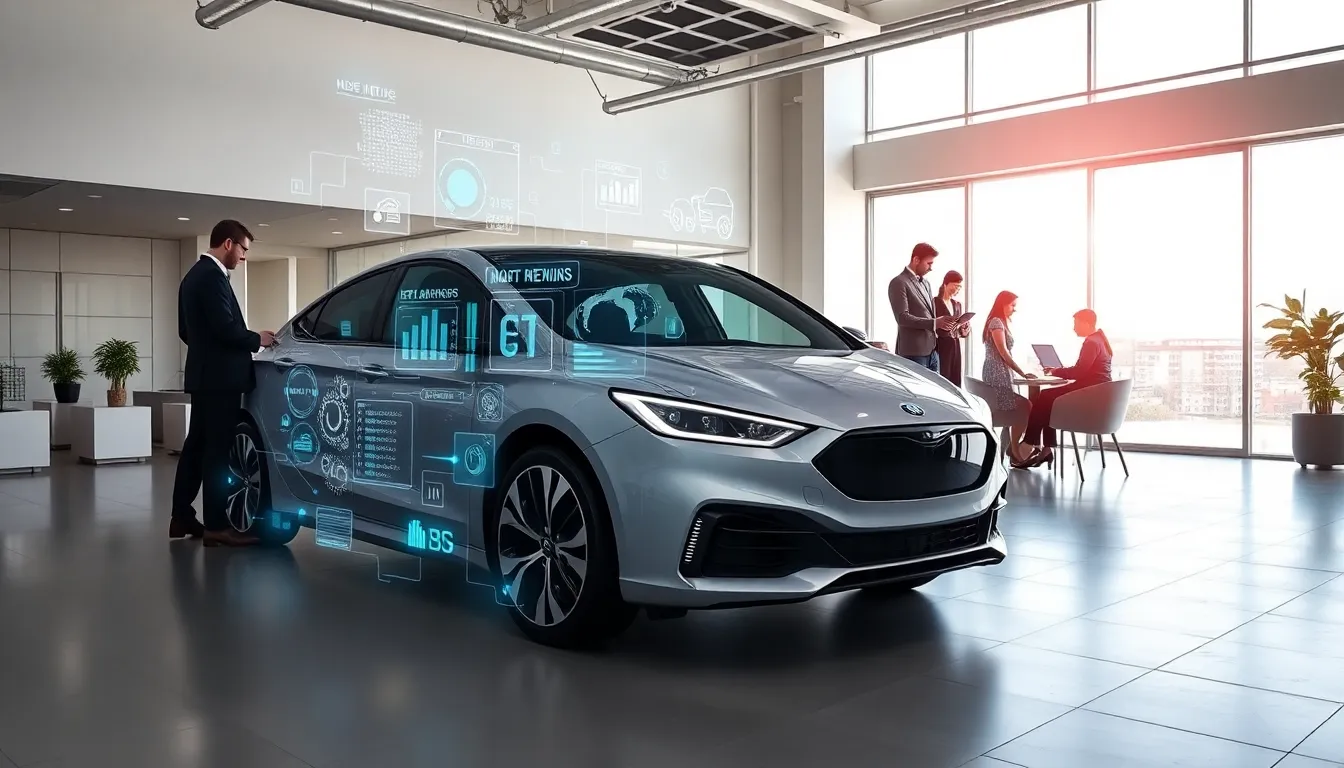In a world where cars can talk to each other and your coffee machine knows exactly when you pull into the driveway, the Internet of Things (IoT) in automotive technology is nothing short of magical. Imagine a future where your vehicle not only navigates traffic but also reminds you to pick up groceries, check the oil, and even pop into the local coffee shop for your favorite brew, all while reducing emissions and improving road safety. This isn’t just the stuff of sci-fi movies: this is reality, and it’s happening right now. Buckle up as we explore the ins and outs of IoT in the automotive world, because this journey is about to get interesting.
Table of Contents
ToggleUnderstanding The Internet Of Things

The Internet of Things, often abbreviated as IoT, refers to a network of connected devices that communicate with each other to collect and share data. At its core, IoT involves the integration of physical objects with the digital world, enhancing how we interact with our environment. In the automotive sector, this means cars equipped with sensors, software, and other technologies can share real-time information.
Imagine a vehicle that monitors engine performance while simultaneously providing updates on traffic conditions: that’s the vibrancy of IoT in motion. Sensors gather data from vehicles and relay it back to manufacturers and service providers, improving vehicle performance and safety while creating a seamless experience for the driver. As we venture deeper into this interconnected realm, we’re not just enhancing convenience: we are redefining mobility.
Key Components Of IoT In Automotive
To understand the impact of IoT in the automotive industry, it helps to break it down into its key components. Each plays a vital role in creating a connected vehicle experience.
1. Sensors and Devices
Sensors are the eyes and ears of any connected vehicle. They gather vital data about speed, location, fuel levels, tire pressure, and even engine health.
2. Connectivity
Vehicles must have a direct link to the internet, often accomplished through cellular networks, Wi-Fi, or dedicated short-range communications (DSRC). This connectivity allows cars to send and receive data in real time.
3. Data Processing
All that data collected by sensors must be processed into meaningful information. Cloud computing and edge computing help analyze this data quickly, providing insights for drivers and manufacturers alike.
4. User Interface
A friendly user interface allows drivers to easily navigate various features. Think of dash displays that show traffic alerts or maintenance reminders at a glance.
5. Security
As cars become more connected, protecting user data and vehicle integrity becomes paramount. Robust security measures are implemented to guard against unauthorized access and cyber threats.
Benefits Of IoT In The Automotive Industry
The advantages of integrating IoT technology within the automotive landscape are impressive and substantial. First and foremost, improved safety is at the forefront. With real-time data, vehicles are better equipped to predict and respond to dangerous situations. They can alert drivers about impending collisions and even enable autonomous emergency braking systems.
Then there’s efficiency. IoT allows for more effective route planning by analyzing real-time traffic data, reducing fuel consumption and travel time for drivers. Not to mention, predictive maintenance helps drivers avoid costly and inconvenient breakdowns by suggesting service before a problem arises.
Also, manufacturers benefit as well. They gain insights into vehicle performance, allowing for improvements in future models. This data-driven approach not only enhances design but also boosts the overall customer experience. All of these factors lead to greater satisfaction for both drivers and manufacturers, who could argue with more joyful journeys?
Challenges And Concerns
While the prospects of IoT in automotive are thrilling, they don’t come without a few bumps in the road. One primary challenge is data security. With vehicles transmitting sensitive information, the risk of hacking increases, potentially exposing personal data and vehicle controls to malicious entities.
Then there’s interoperability. Multiple manufacturers create numerous devices and systems, which may not easily communicate with one another. This lack of standardization can create a disjointed user experience, undermining all the potential benefits.
Finally, the substantial investment required to incorporate these technologies is a concern. Not all manufacturers have deep pockets to pour into IoT development and integration. Striking a balance between innovation, cost, and practicality is crucial for the industry’s overall evolution.
Future Trends In IoT Automotive
The future of IoT in automotive appears to be roaring ahead with enthusiasm, and several trends are already shaping what’s to come.
1. Enhanced Vehicle Autonomy
As technology progresses, more autonomous features will be integrated, increasing convenience and safety on the roads.
2. Advanced Data Analytics
We can expect improved data analysis techniques, leading to smarter vehicles that better understand their environment and predict driver behavior.
3. Eco-Friendly Innovations
As sustainability continues to take center stage, IoT applications will likely prioritize fuel efficiency and reduced emissions, promoting greener automotive solutions.
4. In-Vehicle Experiences
Entertainment and connectivity inside the vehicle will become increasingly sophisticated, allowing for seamless integration of personal devices, fostering a truly connected lifestyle.





